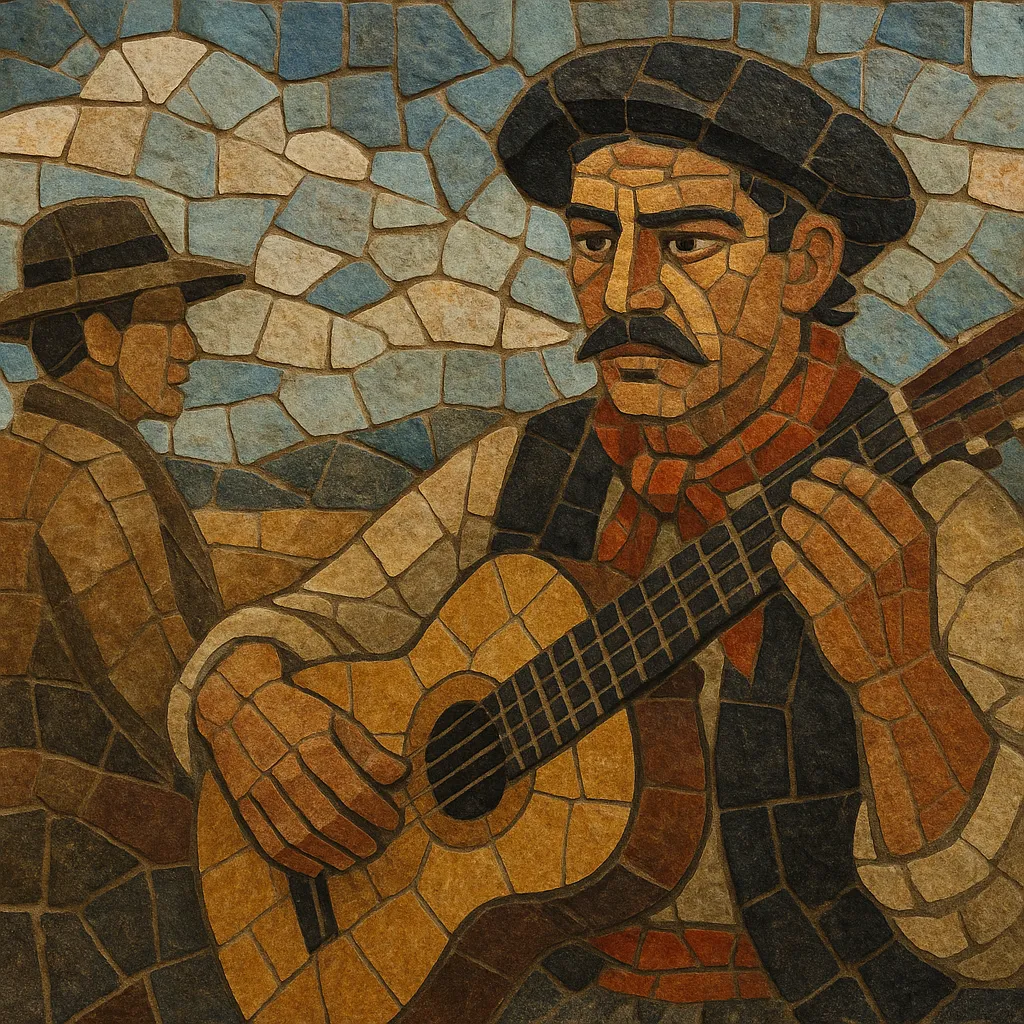Payada is a South American tradition of improvised sung poetry performed by gaucho troubadours called payadores. Verses are typically delivered to the accompaniment of a solo guitar, most often using the milonga campera rhythm derived from the habanera.
Its hallmark is the contrapunto (duel), in which two payadores exchange extemporaneous décimas espinelas—ten-line, octosyllabic stanzas with a tight rhyme scheme—testing wit, memory, and poetic skill. Themes revolve around rural life, love, honor, work, history, and social commentary in the Río de la Plata region.
Although strongly associated with Argentina and Uruguay, payada is part of a broader Ibero-American improvised-verse continuum rooted in Spanish poetic forms (like the décima and copla), adapted to the pampas’ gaucho culture.
Payada arose in the pampas during the 1800s as a criollo adaptation of Iberian improvised verse. It drew especially on the décima espinela and Spanish copla traditions, which arrived via colonial culture, and merged with guitar practices common in rural gatherings (pulperías, estancias). Early payadores sang narrative and moral tales, often in the milonga campera rhythm whose syncopation comes from the habanera.
By the later 19th century, the figure of the payador had become emblematic of gaucho identity. Legendary and historical names—above all Santos Vega (mythologized), and celebrated payadores like Gabino Ezeiza, José Betinotti, and Higinio Cazón—helped codify the contrapunto duel, the décima as the preferred stanza, and a repertory of formulas, openings, and closings. Printed broadsides and urban theaters brought the rural art to city audiences.
As tango and milonga evolved in cities, payada remained a living folk practice in the countryside, radio, and festivals. Payadores continued to improvise on current events, social issues, and gaucho virtues, while women began to gain visibility in the form (e.g., modern payadoras). The tradition spread dialogically with related practices across the Southern Cone.
Payada survives in festivals, contests, cultural centers, and educational programs in Argentina, Uruguay, and southern Brazil. It remains a demanding oral art—valued for verbal agility, memory, and musicianship—that connects contemporary audiences to the gaucho past while addressing present-day themes.


